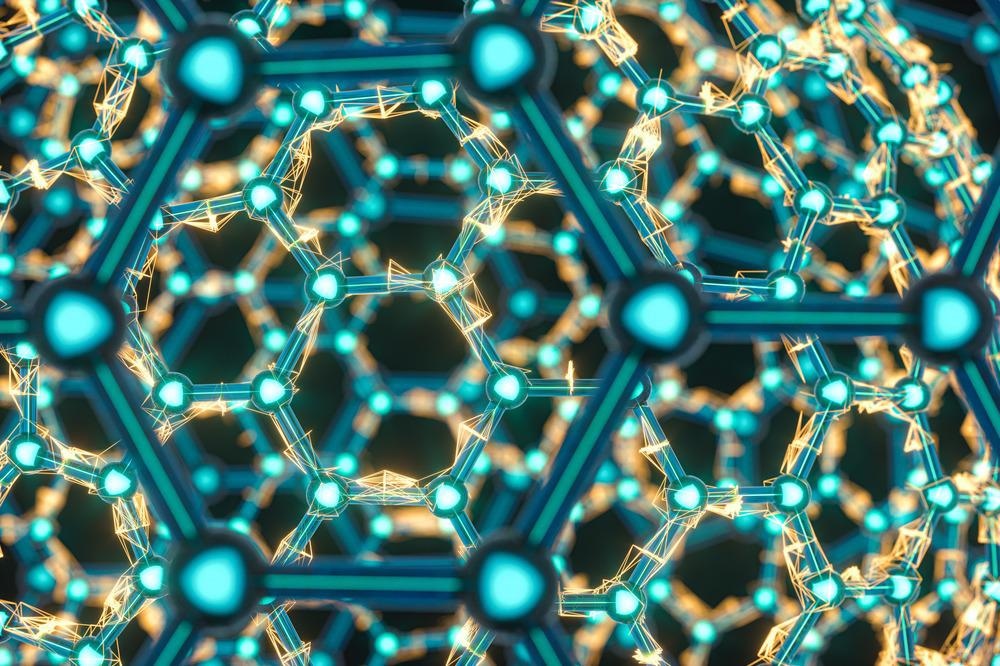Comprehensive research published in the journal Advanced Materials has focused on the utilization and challenges of natural polymers in the field of soft electronics.

Study: Natural Polymer in Soft Electronics: Opportunities, Challenges, and Future Prospects. Image Credit: Vink Fan/Shutterstock.com
The latest research focuses on the fact that although the utilization of synthetic polymers has increased many-fold in recent years, several challenges and problems like inertness and CO2 emissions causing environmental pollution have been the major cause of researchers opting for alternatives.
Incorporation of Natural Polymers in Soft Electronics
Soft electronics, a rampant technological invention that requires the use of soft dielectric and conductive materials, encourage the use of natural polymers due to their inherent smoothness, biocompatibility, in vivo degradability, and diverse topologies.
Biopolymers, such as polysaccharides and proteins (silk fibroin, gelation), are abundant in animals and plants as core ingredients of biomass. While being ecologically sustainable and eco-friendly, they may be used to replace synthetic counterparts.
Importance of Natural Polymers
Natural polymers are the fundamental biochemical elements of many organisms and are harvested for a variety of uses. These polymers offer several advantages, including affordable pricing, widespread availability, non-toxicity, and biodegradability.
The novel combination of natural polymers and conductors has enabled a wide range of soft electronic devices for wearables, on-skin electronics, e-textiles, and implanted bioelectronic applications.
Use of Natural Polymers as Dielectric Components
The novel study stresses the use of thin films made from natural polymers, particularly cellulose nanofibers (CNFs), chitin nanofibers (ChNFs), silk fibroin, and silk nanofibers (SNFs), as appropriate substrates for flexible microelectronics.
CNFs' high flexibility, thermal stability, and chemical resistance are especially appealing for the manufacturing of flexible microelectronic devices. Furthermore, natural polymers have potential use in resistive-switching memory systems. The switching pattern in resistive switching is determined by the magnitude of the applied voltage.
Natural polymers, in addition to functioning electrical gadgets, have contributed to energy collection from the atmosphere to build self-sustaining electronic systems.
Analysis of Metallic Coating
Coating fibers with a metallic layer is more cost-effective and productive than incorporating nanoconductors. Natural polymer-based textiles, on the other hand, feature complicated shapes and high surface roughness. Conventional microfabrication or "metal ink" printing technologies are incapable of producing a homogeneous metallic covering across the textile surface.
Limitations of Natural Polymers and Conducting Fibers
So far, conductive fabrics for devices have encountered two primary challenges. To begin, most conductive fibers are made out of a fiber core arrangement with no insulating outermost layer. Inadequate insulation exposes the conductors to mechanical wear, moisture, and the chance of a short circuit. Second, natural polymers are more sensitive to water splashes than synthetic fibers, yet water-repelling devices have seldom been applied in these natural-polymer e-textiles.
Electrical Conductivity of Natural Polymers
Among all natural-polymer-based conductors, solid-state electrical conductors have the highest conductivity and durability. However, due to the insulating material nature of natural polymers and the poor charge density of the fillers in the structure, their conductivity is still significantly below the inherent conductivity of conductive fillers.
Natural Polymers | Organic Chemistry | Chemistry | FuseSchool
Video Credit: FuseSchool - Global Education/Youtube.com
Effective techniques are projected to raise the conductance of natural-polymer-based composites by increasing the density of the conductive fillers and removing electron-transfer barriers at the network's junctions. Organic surfactants and surface functionalization of conductive fillers are two possible strategies for improving dispersion stability.
Environmental Impact Assessment
A point stressed by the novel research is that although the degradability of natural polymers is a desirable ecological quality, it should not be the only element considered when assessing a material's environmental effect. Instead, integrated techniques and methodologies for life cycle assessment (LCA) should be used to estimate the entire environmental impact of synthetic or natural polymers, which might be facilitated by reference to regulatory requirements.
The research hints at an immense point that the thorough LCA of natural polymers including the study of environmental effects with each stage might reveal that many of the eco-friendly materials might even be more harmful to the environment.
Future Steps
Various techniques, research, and steps are being taken to make such natural polymers are eco-friendly. The first essential step is to enhance the processing of natural polymer extraction, as it is effective in decreasing harmful chemical waste and byproducts. Secondly, bottom-up biotechnology is needed to manufacture high-purity natural polymers.
The last but most important technique is the aerobic degradation environment, as degradation in such environments does not produce harmful methane and other poisonous emissions.
In short, the uses and future techniques regarding the production of natural polymers, especially for soft electronics, considering environmental impacts have been thoroughly discussed by the researchers while effectively assessing the limitations and challenges during utilization of such polymers.
References
Gao, D., Lu, J., & Lee, P. S. (2021). Natural Polymer in Soft Electronics: Opportunities, Challenges, and Future Prospects. Advanced Materials. https://onlinelibrary.wiley.com/doi/abs/10.1002/adma.202105020
Disclaimer: The views expressed here are those of the author expressed in their private capacity and do not necessarily represent the views of AZoM.com Limited T/A AZoNetwork the owner and operator of this website. This disclaimer forms part of the Terms and conditions of use of this website.